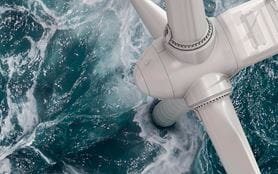Part 2: The need for sector- and region-wide climate strategies
Related people




David Lee
Partner
London

Scott Neilson
Partner
Tokyo

Matthew Townsend
Partner, Global Co-Head Environment, Climate and Regulatory Law Group and the International Trade Group
London

Anna Masser
Partner
Frankfurt am Main

Ken Rivlin
Partner, Global Co-Head Environment, Climate and Regulatory Law Group and the International Trade Group
New York

Sally Dewar
CEO, A&O Consulting
London

Gauthier van Thuyne
Partner
Brussels

Kate Sumpter
Partner
London

Bob Penn
Partner
London

George Cannon
Partner
Washington, D.C.

Goran Galic
Partner
Perth
Headlines in this article
Related news and insights
Publications: 21 March 2024
Publications: 21 March 2024
Publications: 21 March 2024
Publications: 21 March 2024
How much investment in different technologies is needed to deliver Net Zero? And what strategies can drive the necessary financing flows?
Key findings
- Climate finance to date has been dominated by renewables (52% of the total) and low-carbon transport (23%).
- These proportions will need to flip to deliver Net Zero, given that transport has the greatest investment need (at 50% of total required finance or at least USD3.2tn annually), compared to USD163bn in 2019/2020), followed by energy systems (at least 32%, or at least USD2.1tn annually, compared to USD363bn in 2019/2020). Within this, annual investment in EVs will need to rise by 14x, investment in solar PV by 2.2x, and investment in wind power by 3.3x through 2050.
- While energy and transport are the most important sectors for delivering Net Zero, huge investment increases are also needed for building efficiency (to reach USD731bn through 2050); efficient and low-carbon industrial processes (USD320.2bn); clean hydrogen, pumped hydro, and energy storage (USD251.3bn); and CCUS (USD145.3bn).
- Finance for adaptation and resilience is also far below the amount of at least USD254bn required on average per year through 2050. This figure is highly dependent on the rate of warming, which is accelerating faster than expected.
- Investment needs to be scaled across regions, with none currently receiving the necessary quantum of climate finance to meet climate goals.
The volume of investment in climate mitigation varies dramatically across solutions. To date, most policies mandating or incentivizing the adoption of climate technologies have channeled the majority of climate finance to renewable energy and low-carbon transport. As shown in Figure 3, investments in renewables in 2020 represented 52% of overall climate finance, followed by low-carbon transport at 23%.
Well-developed, stable regulations in the renewables sector (eg tax credits, feed-in tariffs and contracts for difference) have driven a rapid decrease in the levelized cost of electricity1 from 2010 to 2021 across clean technologies.2,3This, coupled with the factors outlined in Part 1, has significantly accelerated clean energy investment to the point where it is expected to outstrip spending on high-carbon alternatives for the first time in 2023.4 In some markets, clean energy projects have a lower cost of debt capital than fossil fuel developments, although this varies depending on existing grid conditions, government policies, and availability of and access to fossil fuels and renewable resources.5
Policy support for low-carbon transport delivers results
A wave of policy support for low-carbon transport has brought similar investment growth, especially for passenger EVs, which now represent all of the net growth in global car sales (as of 2022).6 However, investment in decarbonizing other sectors such as buildings, industry, and agriculture remains relatively low, despite these sectors accounting for more than half of global emissions.7 This is largely because the decarbonization process itself is relatively more difficult and/or expensive than the status quo in many of these industries, and in some cases because the technologies required are still in development.
Investment in all of these sectors, both nascent and mature, will need to grow dramatically, from USD850bn in 2021 to an average of USD6.2tn annually in 2030 and USD7.3tn by 2050. To put these numbers in context, investments in low-carbon infrastructure and fossil fuel infrastructure were roughly equal in 2022. In 2023, investment in clean energy technologies is expected to reach USD1.7tn compared to just over USD1tn for coal, oil and gas. Low-carbon spending will need to rise to four times that for high-carbon spending by 2030, and ten times by 2050.8
Financing needs and gaps vary dramatically by sector and technology.10 To better understand these differences, we gathered technology- and sector-level estimates from a range of sources and compared them with our own analysis of tracked financing (Table 1). Based on this research, transport will become the top investment need through 2050, requiring at least USD3.2tn annually, followed by energy systems with at least USD2.1tn.
The technologies with the highest projected investment needs are those that are receiving the most investment today: solar power, wind power, and battery EVs. That said, the financing gap differs between these technologies. For example, annual investment in solar power needs to increase by 2.2 times to USD298.5bn on average through 2050, while annual wind power (onshore and offshore) investment needs to increase by 3.3xto USD508.8bn over the same period. Comparatively, investment in battery EVs needs to increase by almost 14x, from USD78.2bn per year in 2019/2011 to USD1.1tn annually through 2050.
These investment needs also vary by country; for example, EV penetration is much higher in China, which bet on batteries early, than Japan, which clung on to the internal combustion engine and hybrid vehicles for too long and where there are few charging stations as a result. Japan is now betting on growth in the hydrogen fuel cell market to decarbonize passenger transportation, as well as other areas of its economy.
Investment in other areas will need to consistently double or triple in scale. For example, we have seen average annual investment in nuclear infrastructure – which is critical to the International Energy Agency’s Net Zero pathway as it provides a stable source of low-carbon energy – reach USD26.4bn per year between 2015 and 2022.12
An average of more than USD57bn annually will need to be invested in nuclear through 2050.13 However, unlike climate finance more generally, nuclear investment has been variable, ranging from USD3bn to USD39bn per year over the past decade due to a variety of factors, including escalating project costs, competition from alternative low-carbon technologies such as wind and solar, and the dampening effect of the 2011 Fukushima earthquake.
Nuclear investment expected to rise
Investment in nuclear energy is expected to grow, with new projects in China, the U.S., France, the UK, Poland, the Czech Republic, Saudi Arabia and Japan, among others. But to hit the levels required, financing may also need to come from more varied sources – 77% of nuclear investment since 2015 has been provided by public institutions, and 69% has come from state-owned entities.
The highest projected financing gap is in technologies that are not yet as commercially mature as those mentioned above. For example, annual investments in hydrogen and CCUS projects need to hit an average of USD287.7bn and USD125.6bn, respectively. To put this challenge another way, BNEF has calculated that there was global capacity to capture 43 million tons of CO2 in 2022, yet this needs to reach between one and two billion tons by 2030.
Increased investment will need to be deployed across sectors, including in harder-to-abate areas such as industry (including steel and cement) and parts of transport (including heavy-duty trucking) that are not on track to deliver.
Investment in developing sectors will require clear policy signals
In order to achieve this scale, these developing industries will require clear market and regulatory signals in the short term. These may include financial support to reduce investment risk such as through grants, concessional government lending, government procurement, or advanced market commitments. These newer technologies may also require policy and regulatory changes to enable development at scale, including in permitting, offtake agreements, and supporting supply chains.
As an example, nature-based solutions and low-carbon agriculture will require countries to adapt their regulatory and policy frameworks to deploy at the necessary scale. These programs may not fit neatly into a country’s environmental and permitting regime, and there may not be a clear financial incentive to adopt technologies like precision fertilizers and methane-reducing livestock feed. The cost to stop emitting or store carbon in nature and on farms needs to be less than the cost of emitting it, and currently, in most places, the latter is free. In low-carbon agriculture, adopting a precision technology to more efficiently use fertilizer (to reduce N2O emissions) could ultimately lower costs, but requires training and upfront capital.
There is an additional challenge for technologies such as CCUS in that for a storage project to be viable the developer first needs to have invested in carbon capture, and vice versa.
This is why the private sector has found it difficult to make CCUS work without government support. A lot of early stage work is being done around the world to develop CCUS infrastructure, but this is not expected to come to fruition at scale for a decade or more.
IRA and Japan’s Green Transformation Act offer hope
There is hope that policies such as the U.S. Inflation Reduction Act and Japan’s Green Transformation Act could enable emerging technologies to be developed at scale, including green hydrogen, CCUS, low-carbon agriculture, and steel and cement manufacturing. Nevertheless, the extent to which these policies can deliver within a short timeframe is yet to be determined.
It is also important to stress that these investment targets are based on scenarios, not projections. They assume an optimized pathway to Net Zero based on known technologies and assumed costs, and are designed to show decision makers what implementation of a set of coordinated measures could deliver.
Technological developments will have big impact on eventual costs of achieving Net Zero
The actual costs of achieving Net Zero will vary depending on how quickly different technologies are adopted, the pace of technological improvements and breakthroughs, and the efficacy of deployment decisions. Additional unknown non-climate factors may play a role too and are impossible to model.
For example, climate change is expected to be a source of increased conflict in the future, which in turn will have an impact on the climate – both in terms of increased emissions14 and because wars consume capital that might otherwise have been deployed towards mitigation and adaptation.15 These models also do not include the costs of climate-adjacent needs, such as finance for nature and biodiversity, which will both be affected by, and potentially impact, climate change.
A decade ago, we were not even modeling scenarios that limited global temperature rises to 1.5°C, and did not factor in the cost declines of wind and solar generation or battery technologies.16 It is therefore almost guaranteed that the scenarios considered here will, on the upside, miss breakthroughs for new or existing technologies that could reduce the cost of the energy transition and, on the downside, miss shocks that will knock progress off course.
Governments may not choose optimal decarbonization pathways
At the same time, adoption rates do not always follow expectations due to economic, social, technological, and policy restrictions, among other things. As a hypothetical example, if a country decided not to build renewable infrastructure even though it would generate cheaper electricity than high-carbon alternatives, its transition to Net Zero would be slower and more expensive than our modeling anticipates.
Countries may make decisions that are not optimal from a decarbonization perspective to ensure greater reliability of supply, bolster local economies, or provide jobs for communities that currently rely on fossil fuels. See Annex 1 for more information on what drives variation in our financing needs assessment.
Adaptation and resilience finance lags significantly. In addition to the finance required to reduce emissions, capital is also urgently needed to help communities adapt to the impacts of climate change. In 2019/20, adaptation finance comprised just USD49bn of the USD653bn of global climate finance delivered that year. This relatively low percentage is due in part to challenges in tracking private adaptation finance with adaptation projects highly context-dependent and limited impact metrics to confirm project benefits.17
Volume of adaptation finance required is highly dependent on rates of warming
Based on our gap estimates, the average adaptation scenario will require USD286bn of annual climate finance through 2050. However, this figure is highly dependent on the rate of warming and how destructive the impact of associated temperature rises will be, meaning our adaptation finance estimates range of USD197bn to USD374bn per year may change in the future.
To reach this level will require a significant scaling up of private investment in climate adaptation and resilience: 98% of current adaptation financing comes from public sources, primarily multilateral and national DFIs (84% of which is through market-rate or low-cost project debt) and governments (84% of which is through grants).
At COP 26 in 2021, world leaders called for a doubling of adaptation finance by 2025 (based on 2019 levels). They also committed to working towards achieving a better balance between mitigation and adaptation finance relative to the current split, where adaptation finance is only 7.5% of total climate finance.18 With developing economies more exposed to the direct impacts of climate change, achieving this goal will be crucial to ensuring those who are least responsible for emissions do not bear the brunt of their effects.
The finance required could be redirected from fossil fuel-based investment. In 2022, USD1.1tn was spent on fossil fuel supply globally, an amount equal to tracked investment in low-carbon infrastructure.19 On top of this, a further USD1tn was spent on subsidizing fossil fuels, more than double the amount spent in 2021 (this was largely due to efforts in Europe and other advanced economies to shield consumers from high natural gas prices).20
To achieve the goals of the Paris Agreement, we estimate that all new power generation needs to be low-carbon, and indeed the IEA’s latest Net Zero scenario is based on “no investment in new fossil fuel supply projects and no further final investment decisions for new unabated coal plants.” This scenario assumes that, by 2035, there will be no sales of new internal combustion engine passenger cars, and there will be Net Zero emissions from the global electricity sector by 2040.21
However, this must be tempered by reality, and does not mean that there will be no near-term investment in fossil fuel infrastructure, such as LNG terminals. For example, recent estimates from the IEA reveal that while investment in clean energy infrastructure is on course to hit USD1.7tn in 2023, there will still be around USD1tn spent on coal, gas and oil.
Spending on upstream oil and gas is expected to increase by 7% in 2023, taking it back to levels last seen before the COVID-19 pandemic, indicating that there will not necessarily be a smooth transition away from fossil fuels in terms of either consumption or costs.22
Renewables have limitations as a source of on-demand power
While massive strides have been made in recent years to build out renewable energy capacity, renewables cannot deliver power on demand. They also take time to plan, permit, and build. In the meantime, fossil gas remains the predominant commercially viable energy storage method, with green hydrogen and batteries not yet capable of taking its place (although battery storage installations are expected to double in 2023 compared to 2022, and triple again by 2030).23 Although it has a lower financial cost today, fossil gas has substantial carbon and methane emissions impacts.24
Periods of rising fossil fuel prices and supply chain disruption typically lead to increased fossil fuel exploration and extraction, potentially exacerbating a boom-bust cycle that is bad for consumers and long-term investors seeking stability. It would be better for governments, energy suppliers, and consumers to accelerate the scope and timing of fossil fuel transition planning. Just Energy Transition Partnerships, discussed in more detail in Part 3, are a step in the right direction and offer valuable lessons for how a country- or sector-focused program can engage stakeholders and enable a transition more quickly and cohesively than an ad-hoc project-by-project approach.25
Our limited carbon budget means that strong policy interventions are required to rapidly accelerate low-carbon investments and integration of solutions like renewable energy into existing energy networks. However, policies in many parts of the world are still making fossil fuel generation cheaper through subsidies, and efforts to impose carbon pricing are patchy at best.
The specific interventions required will be different in a low-energy-price versus a high-energy-price scenario, but long-term thinking is critical to deliver a smooth transition. At present, we face a disorderly transition pathway given lagging government action and a lack of global agreement, among other things.
Investment needs to be scaled up across regions, as nowhere in the world is close to delivering the capital required to achieve Net Zero. Climate finance continues to be concentrated in a few regions, with 75% of the total global spend invested in East Asia and the Pacific, Europe, and North America in 2019/20.
While no region is spending the required quantum of climate finance, the relative gap is particularly large for those with a higher concentration of developing economies, such as Latin America and the Caribbean, South Asia, Africa, and the Middle East. As discussed in Part 1, developing countries have to invest to develop their economies at the same time as adapting to and mitigating the impacts of climate change. This dynamic has sparked debate around the responsibilities of developed countries to help finance a “just” transition in the global South. Western nations built their economies on fossil fuels, yet the impacts of climate change are being felt disproportionately in poorer regions of the world.
Footnotes
- The levelized cost of electricity refers to the average cost of electricity from a piece of generation infrastructure over its lifetime.
- 88% decline for solar photovoltaic projects, 68% for onshore wind, and 60% for offshore wind.
- Renewable Power Generation Costs in 2021, IRENA, https://www.irena.org/-/media/Files/IRENA/Agency/Publication/2022/Jul/IRENA_Power_Generation_Costs_2021.pdf?rev=34c22a4b244d434da0accde7de7c73d8, p.17.
- https://www.iea.org/news/clean-energy-investment-is-extending-its-lead-over-fossil-fuels-boosted-by-energy-security-strengths
- https://www.bloomberg.com/news/articles/2021-11-09/cost-of-capital-widens-for-fossil-fuel-producers-green-insight
- https://www.iea.org/news/global-electric-car-sales-have-continued-their-strong-growth-in-2022-after-breaking-records-last-year; https://www.iea.org/reports/electric-vehicles
- https://www.epa.gov/ghgemissions/global-greenhouse-gas-emissions-data
- https://about.bnef.com/blog/investment-requirements-of-a-low-carbon-world-energy-supply-investment-ratios
- Note that this figure does not include the estimated increase in climate finance flows in 2021 to USD850bn, which CPI estimates is driven in large part by an increase in investment in low-carbon transport.
- Technologies are a subset of sectors. Sectors in this analysis include energy systems; industry, waste, water and wastewater; buildings and infrastructure; transport; and agriculture, forestry and other land uses, and fisheries. Sample technologies within these categories include solar photovoltaic and wind energy in energy systems, EVs and rail and public transport in transport, and heat pumps and energy efficiency in buildings and infrastructure.
- Given the different financial year-ends of public and private investors, we used annual averages of 2019 and 2020 throughout to smooth out data fluctuations.
- We assume that investment occurred in the year during which construction on a nuclear power plant unit began.
- https://about.bnef.com/new-energy-outlook/
- https://ceobs.org/how-does-war-contribute-to-climate-change/
- https://unfccc.int/blog/conflict-and-climate
- https://iea.blob.core.windows.net/assets/ebe15dfb-30c8-42cf-8733-672b3500aed7/WEO2012_free.pdf; https://www.carbonbrief.org/exceptional-new-normal-iea-raises-growth-forecast-for-wind-and-solar-by-another-25/
- https://www.climatepolicyinitiative.org/expanding-the-horizon-of-climate-adaptation-finance/
- https://unfccc.int/process-and-meetings/the-paris-agreement/the-glasgow-climate-pact/cop26-outcomes-finance-for-climate-adaptation#What-specific-financial-pledges-were-made-at-COP26
- https://about.bnef.com/blog/global-low-carbon-energy-technology-investment-surges-past-1-trillion-for-the-first-time
- https://www.iea.org/reports/fossil-fuels-consumption-subsidies-2022
- https://www.climatepolicyinitiative.org/publication/paris-misaligned/; https://www.iea.org/news/pathway-to-critical-and-formidable-goal-of-net-zero-emissions-by-2050-is-narrow-but-brings-huge-benefits
- https://www.iea.org/news/clean-energy-investment-is-extending-its-lead-over-fossil-fuels-boosted-by-energy-security-strengths
- https://www.bloomberg.com/news/articles/2023-01-12/even-high-battery-prices-can-t-chill-the-hot-energy-storage-sector
- https://rmi.org/reality-check-natural-gas-true-climate-risk/
- https://www.climatepolicyinitiative.org/wp-content/uploads/2023/06/CPI_An-Innovative-IFI-Operating-Model-for-the-21st-Century_updated.pdf









